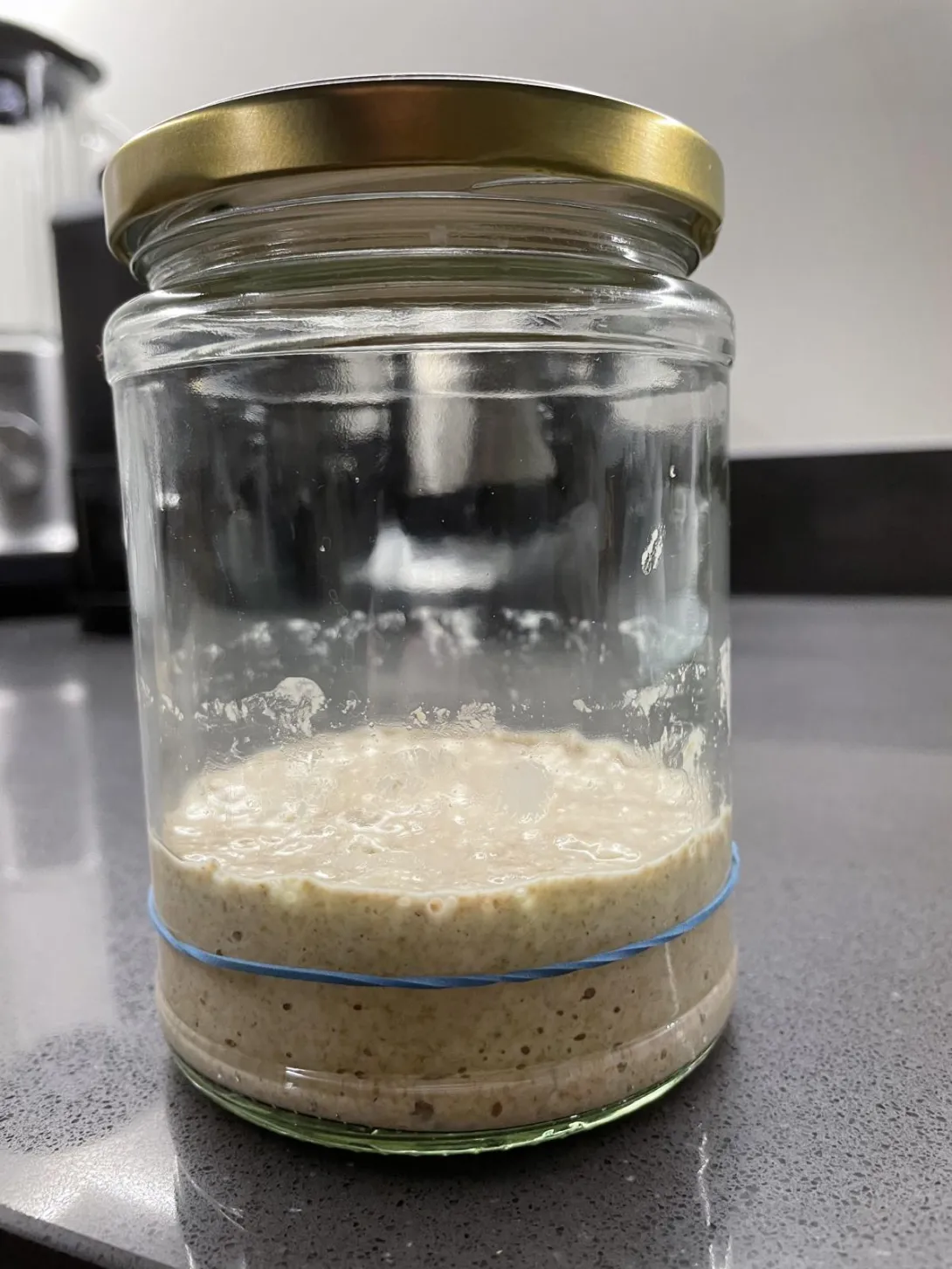
Hi there,
I'm pretty new to sourdough and have recently developed my own starter. I had two failed attempts to get a starter going previously with a 1:1:1 ratio, feeding every 24hrs, so on my third try I went with 1:1:1 every 12hrs and this seemed to work well and I think my starter is now in pretty good shape (it's been alive for a few weeks now).
I don't really want to have to feed my starter twice every day, and I gather than most people will feed once a day (assuming it's kept at room temperature, which mine is for now), so I gradually reduced my feeding ratio to now using 1:5:5, and have left it for 24hrs between feedings, but I'm worried that it's not as happy/healthy as it was when I was feeding it every 12hrs. It used to grow 2-3 times the size in about 5-8hours and more or less keep its height until I fed it at the 12hr mark. Now it grows a little slower (due to the lower ratio I assume), but by the time the next feeding comes (after 24hrs), it's deflated quite heavily and looks a bit more sticky, gloopy and dense.
My question is, is it normal/expected/fine that it has deflated by the time it gets to the next feeding? I've heard that it's ideal to feed it when it's at its peak, but I don't know how people manage this with a 24hr feeding schedule, especially since it seems like most people are also using somewhere between a 1:3:3 to 1:5:5 ratio.
P.S. The room temperature is generally around 23-24°C in the day (which I guess it fairly normal). I'm not sure about at night but I'd imagine only a few degrees less.
The attached picture is after the first 24hr break at 1:5:5 and you can see where it had risen to before deflating
By the way, going from 1:1:1 to 1:5:5 ratio feedings would be considered increasing the ratio not decreasing the ratio because you’re increasing the ratio of flour to starter than you’re giving your starter.
If you want to keep your starter at your room temperature all the time and want to feed once a day, you’re going to have to feed it a much higher ratio. The fact that is it fallen, sticky and gloopy indicates that it has run out of food and become very very acidic. At those temperatures you might have to do feeding of 1:10:10 or even higher. If you would be OK with a stiffer starter than doing 1:7:10 for example would probably last longer than 1:10:10 because the higher hydration will ferment faster while lower hydration ferments more slowly.
Is there any reason you don’t want to take advantage of your fridge? It would be easier to feed your starter at whatever ratio you want and then when it has peaked place it in the fridge. Then take it out the next day if you feel like feeding it again. Once it is well established you can leave it in the fridge for a week without feeding it and use some of it cold to build your levain.
Benny
Look at a thread by chris the human for more info, but to answer the question, it is normal for a starter to rise and fall. Enjoy!
Also, the relation is not linear. 1:3:3 will deflate before 24 hours, but so will 1:10:10 and even 1:20:20. In my observations, the process has three stages: 1. Almost nothing happens. 2. Active rise. 3. Deflation.
Items 2 and 3 always have the same rate. It is item 1 that is shorter with 1:1:1 (almost zero) and much longer, but not indefinitely long, with higher feed-to-starter ratios.
Good news is that I see not difference in the quality of the subsequent batch caused by starter turning too acidic before the next feeding. So what I do is just mix the same parts of 40 gr water and 50 gr flour and just add about 1-2 grams of starter, and don't worry about it for 24 hours, and not fret if I forget and/or fall asleep. 36 and even 48 hours are OK. It will smell very sour, but will behave the same during the next cycle.